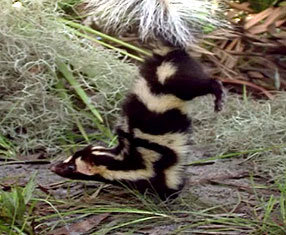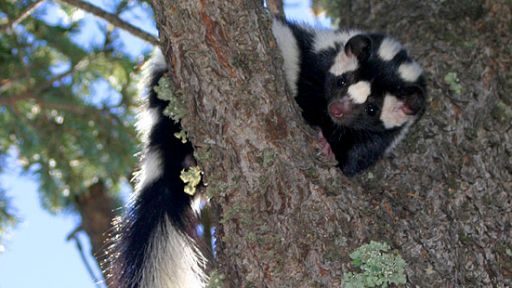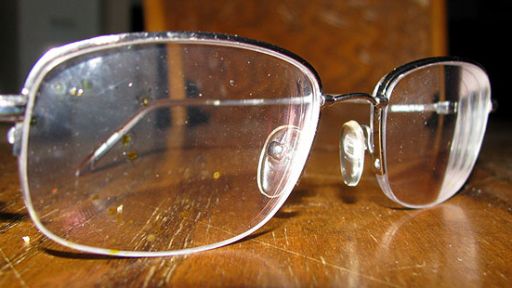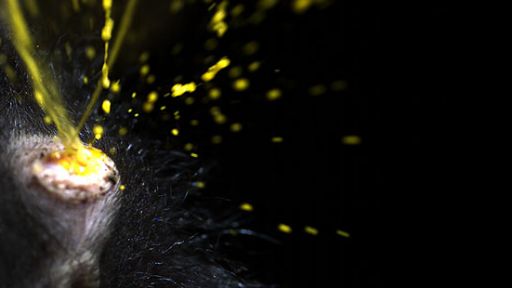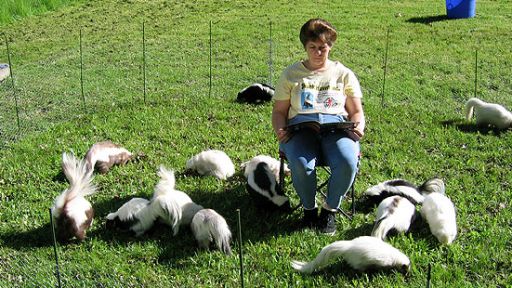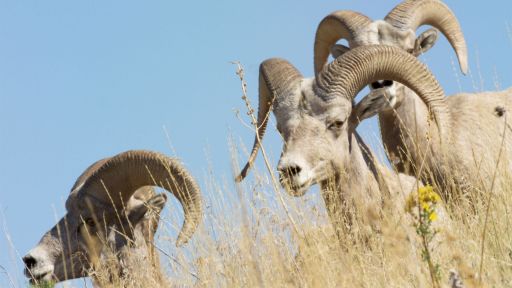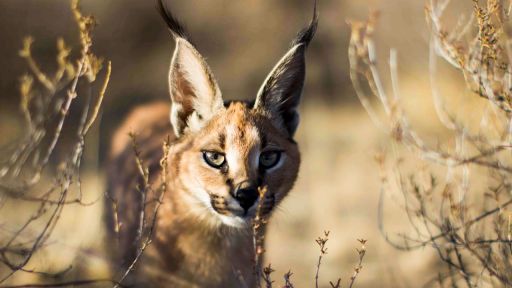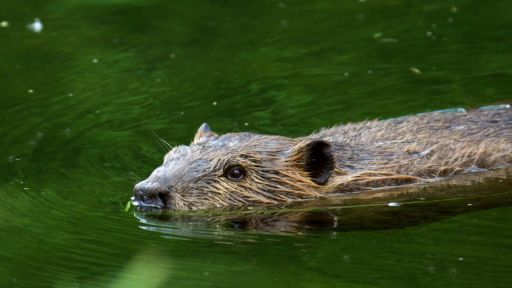As noted in Is That Skunk? skunks have not always been classified as their own family. Skunks were originally grouped inside the Mustelidae family (weasels, otters, badgers, and their relatives) because of the physical similarities including a squat body, strong claws for digging, enlarged anal glands and musty anal secretions. But skunks have even larger anal glands, and instead of a duct that secretes scent markings, skunks spray their scent from nipples in the anal gland that can be precisely aimed and controlled. This and other morphological differences led Jerry Dragoo and his colleagues to take a closer look at skunk DNA. They found that skunks did not belong in the Mustelidae family, and should rather be classified as their own family, which they named Mephitidae, after a word meaning “stink.” In fact, the DNA and evidence from the fossil record suggest that the Mephitidae family derived from a single common ancestor about 30-40 million years ago. The descendants of this ancient skunk have evolved into 12 of the stinkiest and most intriguing species on the planet.
Striped skunks, Mephitis mephitis: Striped skunks are one of the most abundant and recognizable mammals in North America. They can be found in Canada, throughout the United States, and into northern Mexico. Part of what has made striped skunks such a successful species is their ability to eat almost anything—insects, small mammals and birds, vegetables, fruits, eggs, crustaceans, grasses, and carrion. They will even raid human garbage. Striped skunks are both solitary and nocturnal. Their characteristic fur pattern is a white strip that starts at the forehead and splits into a V shape as it travels down the skunk’s back. Skunks are born hairless, but their stripes are visible from birth. The length and width of stripes varies with each individual. There are also some skunks that are completely black or completely white.
Hooded skunks, Mephitis macroura: Placed in the same genus as the striped skunk, Mephitis, hooded skunks are similar in appearance to striped skunks, but have longer and softer fur, especially around the neck. They also have a longer tail. Like the striped skunk, hooded skunks will stomp with both of their front feet as a warning before spraying. There are three distinct color patterns in the hooded skunk. Some hooded skunks have a single, solid white stripe running down their back from their forehead to the tip of their tail, some have two thin white stripes running down the side of the body from shoulder to stomach, and some have a combination of these two patterns.
Spotted skunks, Spilogale: Spotted skunks are the smallest members of the family. They are also more slender and have shorter fur. All skunks are good rodent hunters, but spotted skunks are especially good at capturing rats and mice. Spotted skunks are faster than other skunks, and because they are smaller, they can get into small holes and tunnels where rodents may hide. They are also the only skunks that can climb trees. When threatened, spotted skunks do a front handstand, which makes them appear much larger. The “spots” on their back are not actually spots, but a series of interrupted white lines.
Hog-nosed skunks, Conepatus: The elongated snout of the hog-nosed skunk is used to extract bugs and grubs from the ground. Hog-nosed skunks are excellent diggers, and they have long, specialized claws and impressive upper body strength. Their powerful forearms can be used to dig dens and climb up rocky slopes. Hog-nosed skunks can be found in the United States, Mexico, and Central and South America.
Stink badgers, Mydaus: The two species of stink badger are the only members of the Mephitidae family not native to North or South America. The Philippine stink badger can only be found on the islands of Palawan and Busuanga, and the Indonesian stink badger can be found on Sumatra, Java, Borneo, and North Natuna Islands. Like members of the skunk family, stink badgers have short, muscular limbs, elongated claws, a stocky body, and scent spraying anal glands. The most marked difference between stink badgers and skunks is the lack of a bushy tail. Stink badger tails are short and pointed. The Indonesian stink badger has extremely potent anal secretions that are green in color. Both species of stink badger resort to spraying as a second line of defense. Their first defense tactic is to feign death.


